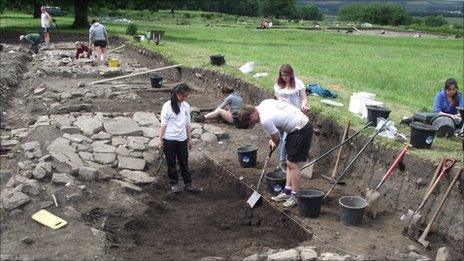Richborough: Holding cell for gladiators found at Roman site
- Published
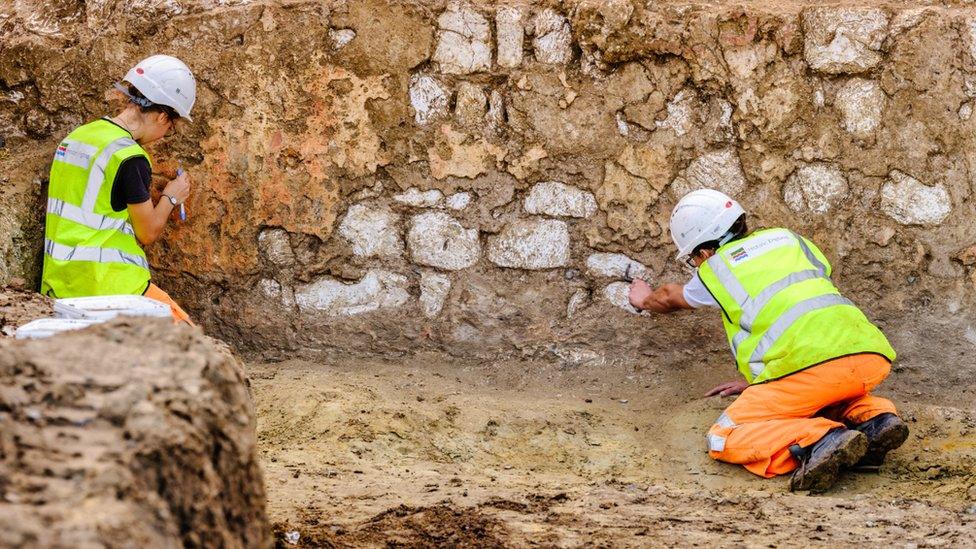
Richborough is now believed to have been occupied for almost the entire period of Roman rule in Britain
A cell to hold people or animals who were due to perform or be executed at a Roman amphitheatre has been discovered.
The find comes 172 years after Richborough Roman Amphitheatre, near Sandwich, Kent, was first uncovered.
Archaeologists also found the complete skeleton of a cat which had been purposefully buried, which they have nicknamed 'Maxipus'.
The discoveries have provided further evidence that Richborough was one of Roman Britain's most important sites.
The cell, called a 'carcer', would have held gladiators about to do combat, wild animals or prisoners facing execution.
They would have all been the focus for public entertainment in the amphitheatre, which could seat up to 5,000 spectators.
It was uncovered by Victorian archaeologists in 1849.

Archaeologists have nicknamed the carefully-buried cat 'Maxipus'
The construction of the amphitheatre, using chalk and turf, has led experts to believe it may have been built in the 1st Century.
Other finds - such as animal bones, coins and pottery fragments - suggest the town was being lived in until the end of the 4th Century, covering almost the entire period of Roman rule in Britain.
Newly uncovered paint traces show it would have been decorated in vivid reds and blues, making it unique among amphitheatres built in Britain.
The carefully-buried cat was found on the edge of a ditch outside the amphitheatre.
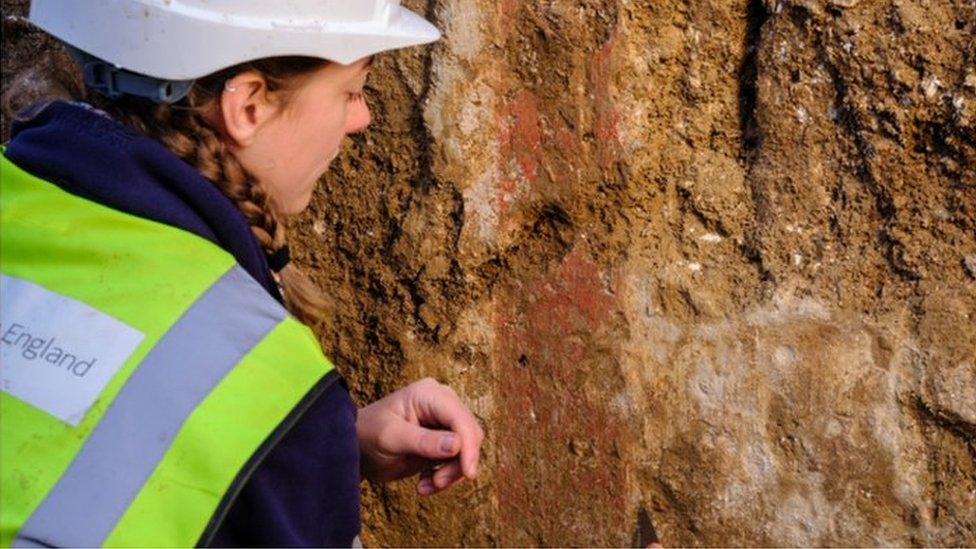
A cavity in the amphitheatre wall has now been identified as a holding cell for humans and animals
Paul Pattison, English Heritage senior properties historian, said: "We've always known the Roman fort at Richborough was an important place to the Romans, until the very end of their rule, and now we have been able to gather evidence that much of the town outside the fort may also have been settled until the very end."

Follow BBC South East on Facebook, external, on Twitter, external, and on Instagram, external. Send your story ideas to southeasttoday@bbc.co.uk
Related topics
- Published10 August 2021

- Published13 September 2020
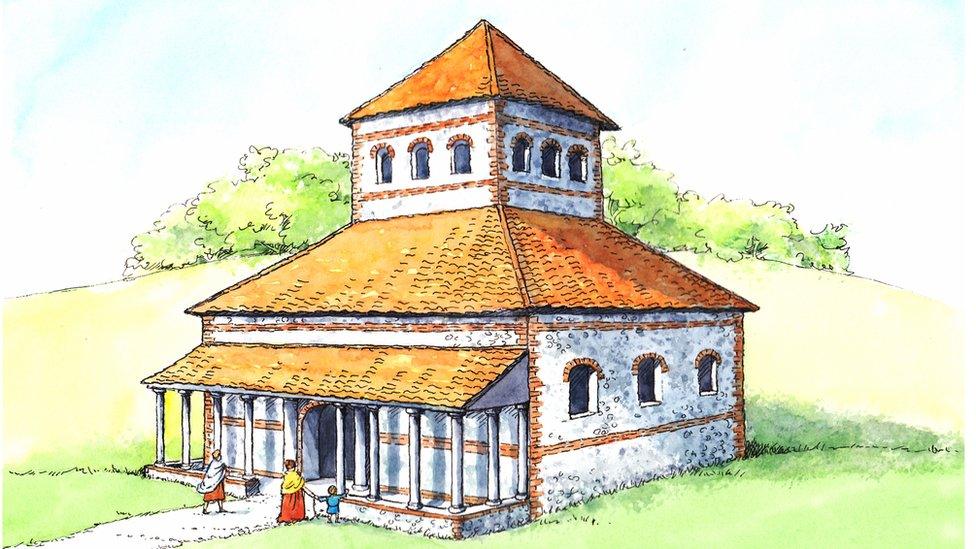
- Published9 March 2020
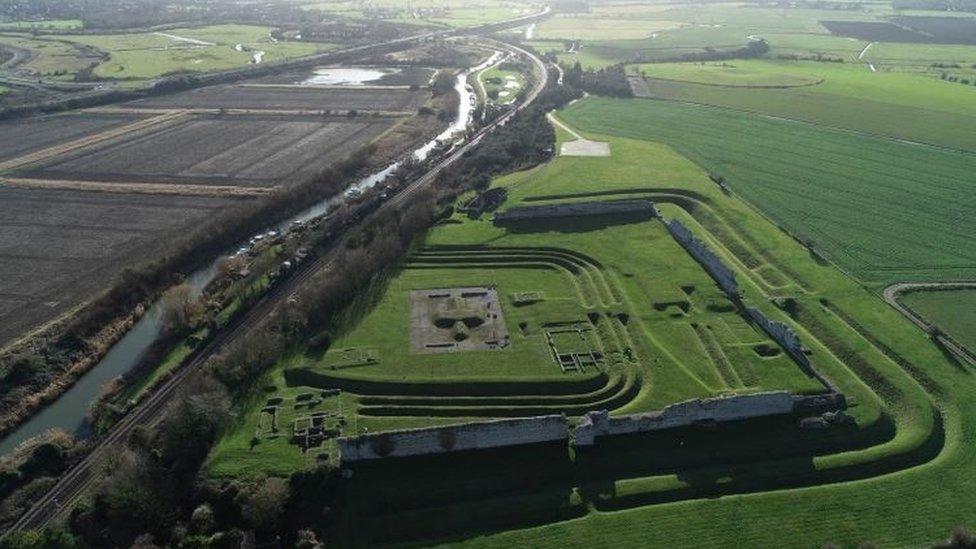
- Published15 June 2015
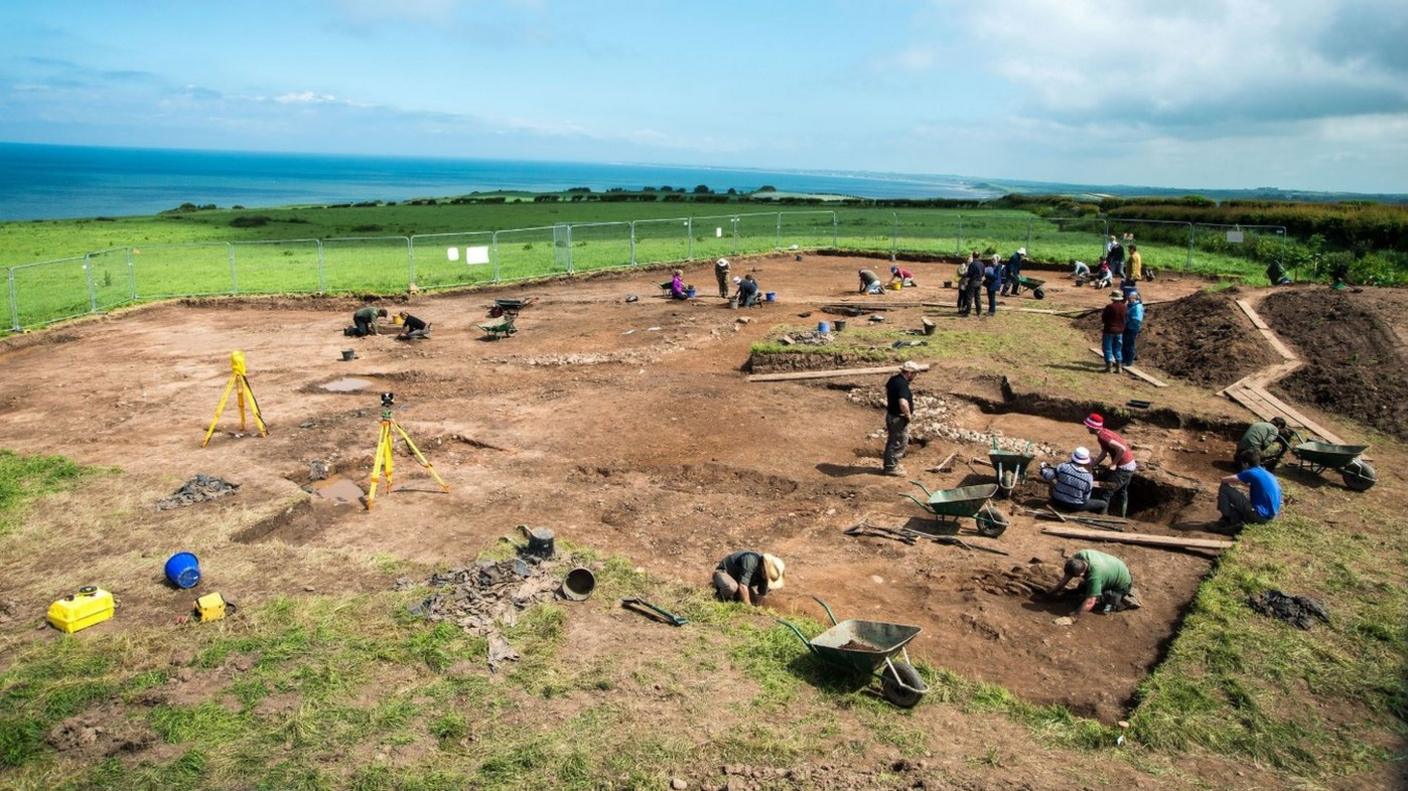
- Published10 February 2016

- Published9 September 2011
